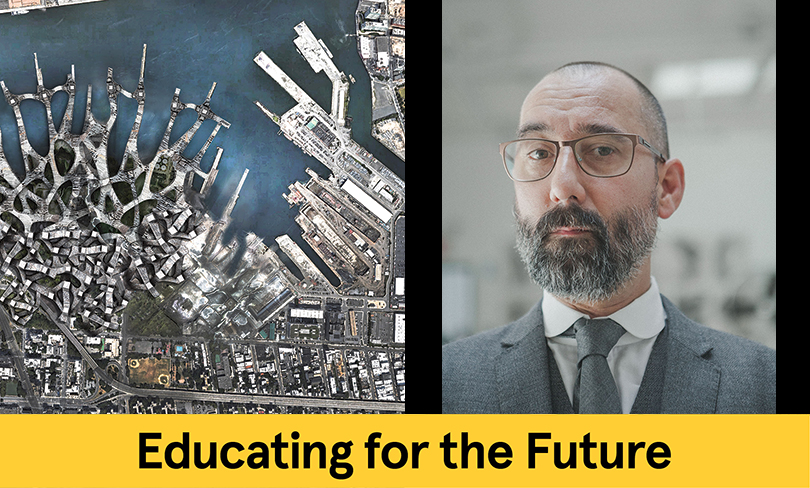
Exploring new models for education is one of the pillars of President Frances Bronet’s inauguration and an important area of discussion in academia. We live during a time of dramatic change, where the landscape is quickly shifting. How is Pratt preparing its students for careers and technologies that aren’t here yet?
In this new weekly series, “Educating for the Future,” educators across Pratt’s disciplines share their vision as to how they are educating students for a world that is quickly evolving—and reflect on what is needed to prepare the next generation for an environment that is rapidly changing.
This column is by David Erdman, Chair of the Graduate Architecture and Urban Design Department in Pratt’s School of Architecture.
How can we educate master of architecture students to ask questions of the discipline or profession that could not have been imagined? To do so requires some adjustments to graduate education, which has been predominantly technologically focused and knowledge-based. Part of how we are doing this in the Graduate Architecture and Urban Design (GAUD) Department is through “directed research”—programs and courses focused around challenging issues the profession and discipline are currently facing or may face in the near future. Here, we are attempting to find “blind spots” in otherwise familiar subjects such as sustainability or technology that galvanize design, making, and cyclical learning, and which require students to speculate on possible future scenarios. It is (in short) to admit that most technology we teach with today will be obsolete in five-to-ten years and that the timeline of technological obsolescence will only continue to accelerate.
In tandem with this thinking, we try to elevate each student’s understanding of these terms through our curriculum with great specificity and (primarily) as a means of enabling their engagement with other disciplines and audiences outside of architecture.
Density, for example, has been one of two key areas of focus that comprise the GAUD Directed Research initiative. It is seen as a precise, design-oriented way to engage broader issues of how architects work with context and sustainability. It is indeed a disciplinary and professional irreconcilable “nerve ending,” prime for academic study and the institutionality of Pratt.
Through coursework, and with students, faculty have been exploring the potentials of urban densification. Building upon the geopolitics of sustainability and the consortium of over 100 major cities bound together by overlapping interests in densification (via the Paris Accord and other agreements), these studios look at how we can inhabit extreme density and how it can have an equitable and inclusive public agenda. Predominantly looking at sites in Brooklyn and New York City, students are speculating on a range of design issues spanning from the urbanization of waste to energy facilities and their impact on land use and waste management ecologies, to designing subterranean “pleasure grounds” (parks) that imbue urban infrastructure with the capacity to be used as a form of wilderness and recreation, to compact affordable housing along various corridors and edges of downtown Brooklyn.
Find all of the “Educating for the Future” features and learn more about how Pratt’s educators across the Institute are addressing what the future of education will bring to their field.